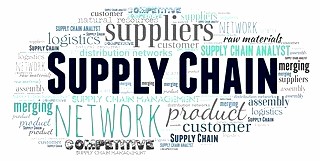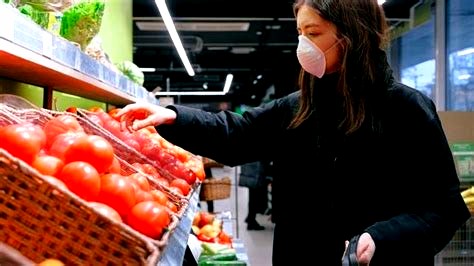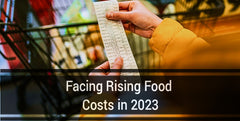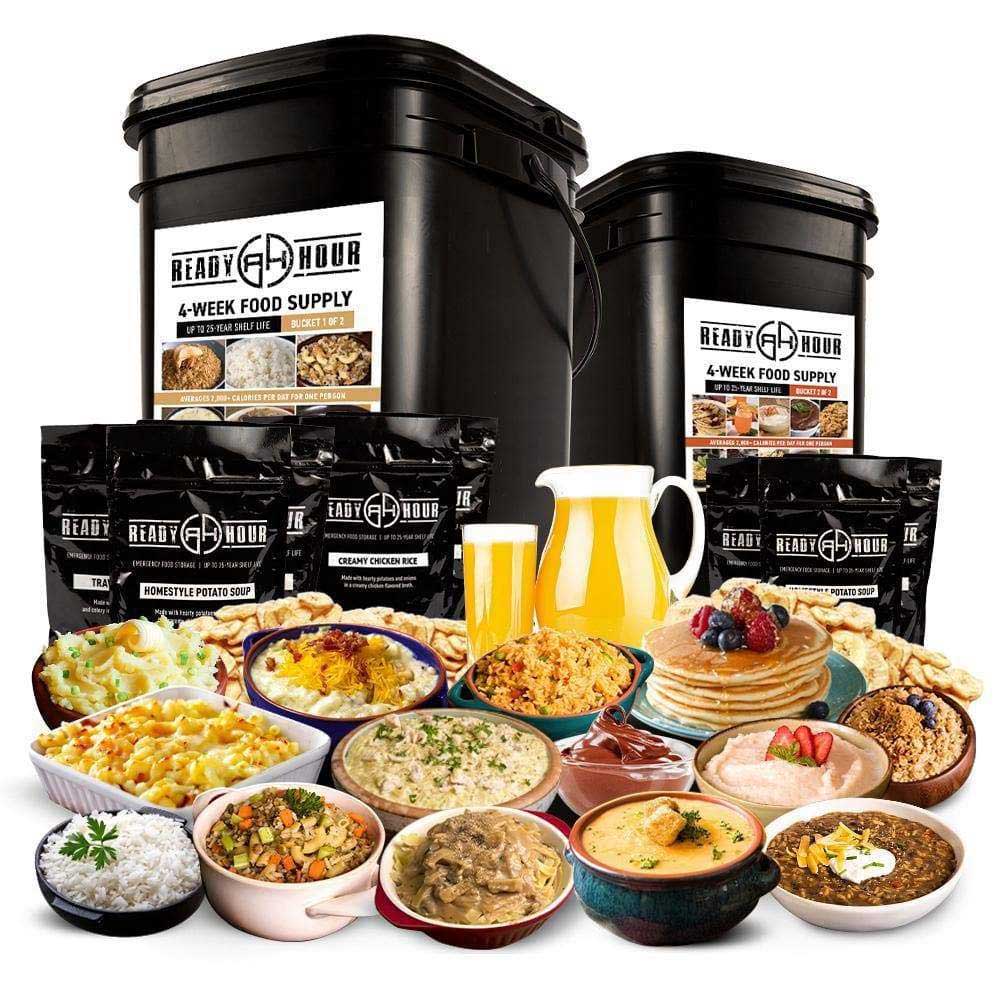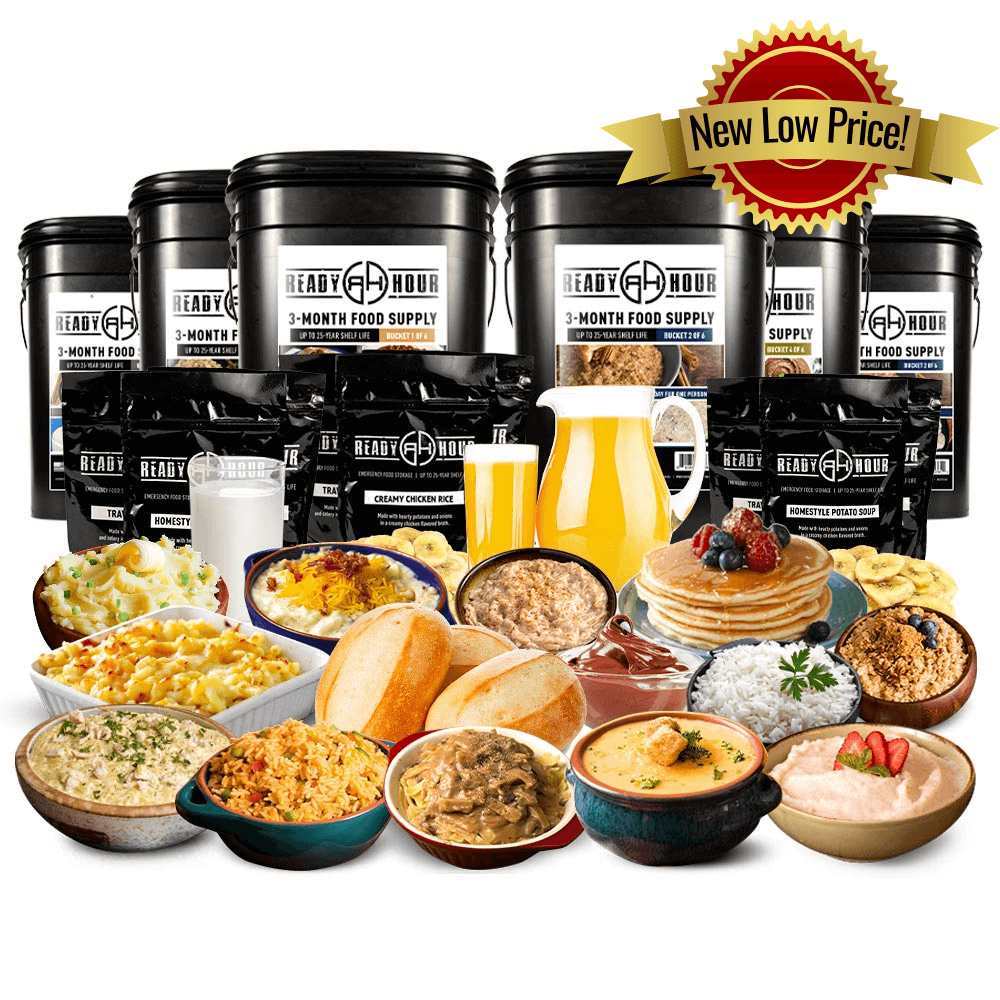
Whether you live in a trendy, Tudor-style neighborhood on the hill or a traditional mud hut in the bush of Botswana - one fundamental human right that we all share is access to a reliable food supply.
We also share the same risk when it comes to vulnerabilities of the systems that are responsible for farming, transporting, and processing the very meals we all depend on to survive.
When we contemplate being confronted with an actual food shortage or crisis on a grand scale, we must look back to revisit the moments in history when large numbers of people, from communities to countries, or global disasters affecting tens of millions in some cases and stop to think about how much the entire human race is connected. Especially when multiple continents and billions of people across the world are sometimes dependent on the same few countries for exports that are not only a requirement for food but are also used to process biomaterials for fuel and of course an industry that employs many millions of people.
Many countries face stark challenges in the global food industry as a result of war or political tension and the nature of goods they import or export often plays an important role.
And with that said, we can’t forget the human element of our societies full of dedicated people from all occupations who work tirelessly to keep one of the world's largest economies running. Their responsibility and diligence to get our food from its source to our table in such an intertwining and dizzying logistical system is no easy task.
Afghanistan Famine - The Taliban was Denied a Bank Loan
One recent heavy-handed move was the 2021 US involvement in Afghanistan when the Taliban regained control following the removal of almost 3,000 troops from the United States and other allies. As a recourse, the Biden administration, along with the IMF and World Bank froze 9 billion dollars (about $28 per person in the US) in assets to prevent access and misuse of US funds by the hands of jihadists. A major case of collateral damage in this situation was that anywhere from half and up to 97 percent of the Afghani population was affected by the strain that this conflict put on their food economy. Included in their hardship has been a continuous drought that is stifling their ability to grow food and causing workers to escape the danger themselves. Since then, we have provided well over 500 million in humanitarian aid as well as one billion coming from the WFP early last year.
The Supply Chain - Only as Strong as its Weakest Link
The links in a supply chain are another crucial element to a food shortage and can be an obfuscate knot to untie but still reaches the same result. You can go down the rabbit hole of past events to notice trends and building blocks that lead us to the current state of environmental, financial, and logistical pressure under an understandably fallible system. Again, the supply chain is imparted to the network of countries and our reliance on certain regions or specific exports (and vice versa). When availability is disrupted - the discourse travels right down to the consumer.
COVID - 19: The Pandem(ic)onium
The Coronavirus pandemic changed the supply and demand food game as we know it by shutting down and limiting a staggering amount of distribution channels to many vital growers and food producers. This of course came at the same time millions of people were crucially in need of more specific, diet-conscious, or healthier foods. Limited availability also proved increasingly difficult in lower income brackets for food sensitivities, and it bottlenecked many communities around the world. These limitations are still detrimental to many already immune-compromised people, and not having a reliable source of nutritional intake could be deadly for those working harder to fight off this type of virus.
Energy Crisis of 2007 - Natural Gas, Grass, or A@$. Nobody Dines for free.

The War with Ukraine - The Wheat Is On
Earlier this year Russia banned exports of ammonium nitrate which caused a massive increase in cost. Weather issues pointed toward climate change after massive heatwaves and droughts drastically affected the rest of the world's production. Lack of resources and the ability to produce them is only increasing the need and therefore raising prices on what is already available
The Russian invasion of Ukraine has been a massive cornerstone in the supply chain problem due to the impact of their sheer agricultural output and the result it has on the rest of the world to keep up with demand and pick up the slack. A major global hit was the cause of loss to numerous structural crops such as wheat - one of Russia's biggest exports.
Together with Ukraine, they are easily the world's biggest suppliers of wheat, corn, sunflower oil, and seeds. These goods affect the globe in many ways but carry substantial weight in the production of ethanol which fuels a major part of our planet's transportation grid.

What can you do to help? Create awareness and act.
The controversy of big agriculture excess in the West vs famine in the East does not mean that most Americans take this for granted – most of us care deeply as this affects each one of us personally; our families, friends, neighbors, and humanity in general. There are always a few ways that we can do our part to not only spread awareness but urge our community leaders to act.
For example, the AFFI or American Frozen Food Institute has been focusing on the issue of vegetable oil being needed for biofuels, which is creating a shortage of food companies and the production of frozen food products. This edible source of fuel being overwhelmed by the transportation industry, which also helps keep the supply chain motor running, is a circular conundrum that is something to think about. This is another example of how inflation begins and adds to the cost of this crucial cycle Getting involved by sending a message to representatives and members of Congress is always an easy place to start.
Long-Term Storable Food - Turn a Shortage into a Surplus
In our modern era as a commercialized society, we are fortunate to live in a country where many types of food are readily available. We can go into most grocery stores on a normal day and find about everything we can think of for an evening's meal or gather what we need for the coming weeks to keep ourselves or our families fed without any worry or stress of going without.
This leads to another scenario where short-term or long-term storable foods would also be a valid option to consider. If there is any household item or emergency product to prepare you for a food shortage this would be it. You may or may not see a food shortage coming but having emergency rations on hand could be a lifesaver
Food For Thought -
In closing - what a “shortage” could mean to some of us in the United States could mean something vastly different and culturally devastating to an entire village in Kenya. On a relative scale, we've seen our neighborhoods panic and clear out shelves for weeks at the thought of going a few days without milk or eggs, cereal, or even the almighty protein.
While these are vital to our lives, it is easy to overlook what goes into keeping those very shelves stocked and our entitlements to variety and value satisfied. And at the same time, we hustle through our cities and cruise freely on open roads with those familiar and brightly lit icons of convenience streaking across our automobile windows as we pass them by. Sometimes nothing more than an expectation that we might not even realize until they're gone.


